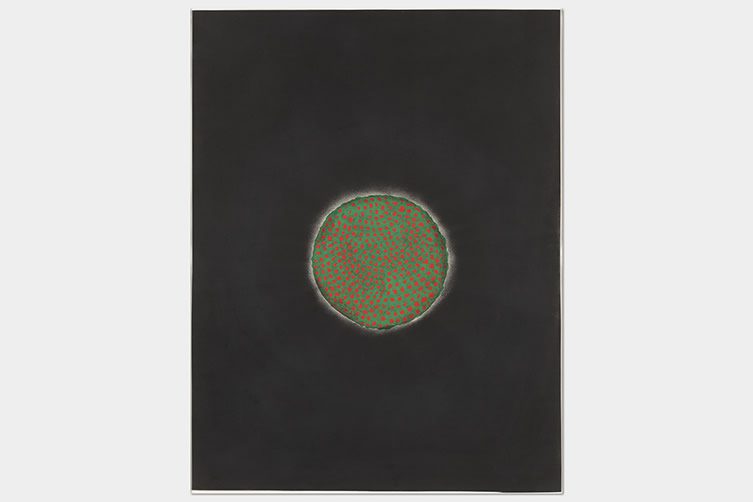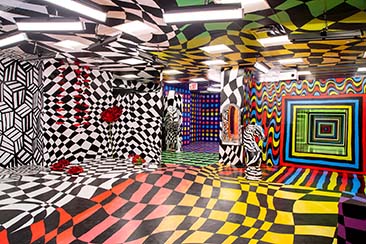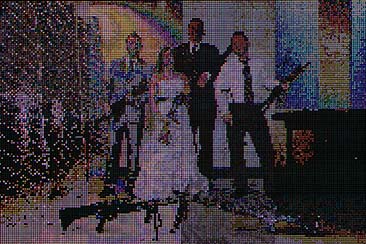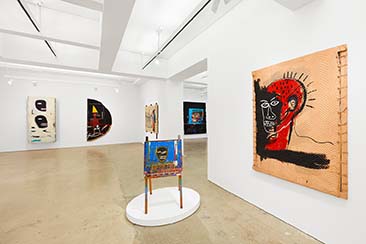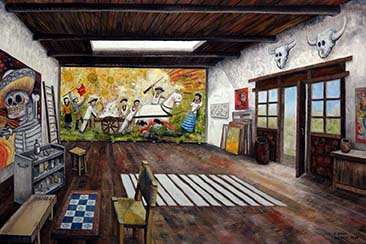Tokyo: fast-paced, technologically advanced, industrious, commercial, five-story electronic billboards screaming at you to buy stuff. Artistic? You’d be surprised. Not so very long ago it was a capital city pulling itself from the rubble of defeat in World War Two, and in the immediate years following the conflict Tokyo was home to the country’s artistic forward-thinkers, whose vision for rebuilding the city shaped its current existence.
At the Museum of Modern Art, New York, over 200 works have been brought together to form the exhibition Tokyo 1955–1970: A New Avant-Garde. Almost every medium you can name is represented in an amazing curatorial feat – painting, sculpture, photography, drawings, graphic design, architecture, video, and documentary film all contribute towards creating a cohesive picture of an extraordinary time in an extraordinary city’s cultural history. Forget any preconceptions you had about the Japanese people and artistic imagination. The exhibition runs until 25th February, 2013.
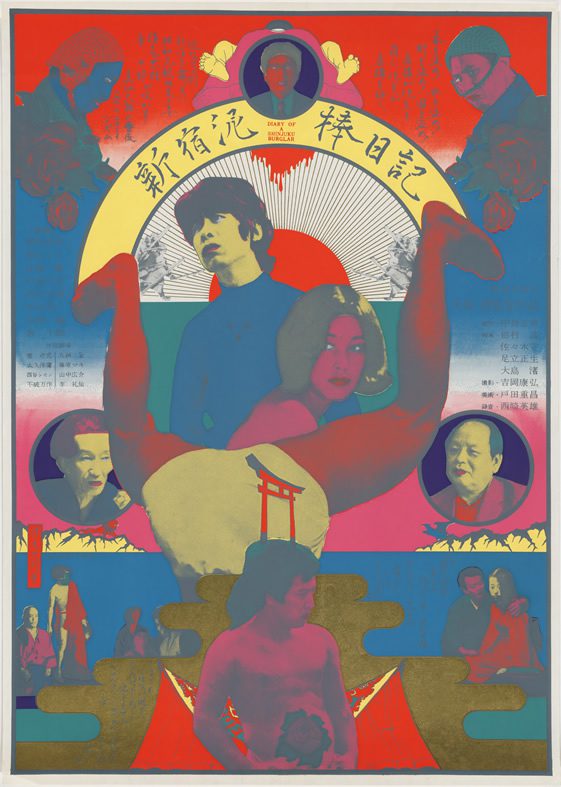
Yokoo Tadanori. Diary of a Shinjuku Thief (Sōzōsha) (Shinjuku dorobō nikki [Sōzōsha]). 1968.
Screenprint. 39 1/4 x 28″ (99.7 x 71.1 cm).
The Museum of Modern Art, New York.
Gift of the designer.
© 2012 Yokoo Tadanori
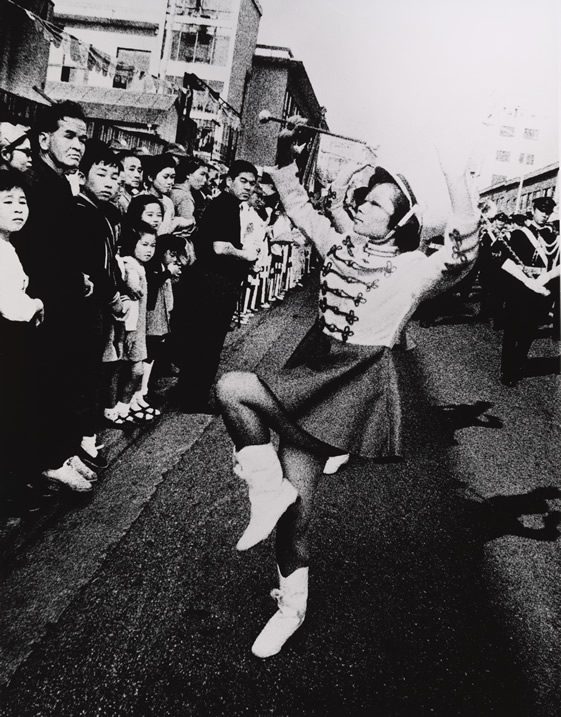
Moriyama Daidō. Baton Twirler (Baton towarā). 1967.
Gelatin silver print. 18 7/8 x 14 11/16″ (48.1 x 37.4 cm).
The Museum of Modern Art, New York.
Gift of the photographer.
© 2012 Moriyama Daidō
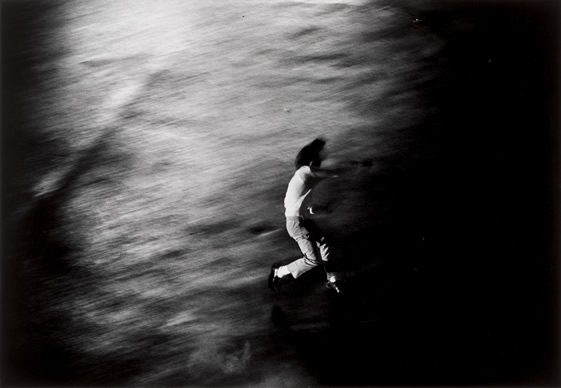
Tomatsu Shomei. Untitled, from the series Protest, Tokyo (Purotesuto Tōkyō). 1969.
Gelatin silver print. 16 1/8 x 23 1/8″ (40.9 x 58.7 cm).
The Museum of Modern Art, New York.
Gift of the photographer.
© 2012 Tomatsu Shomei
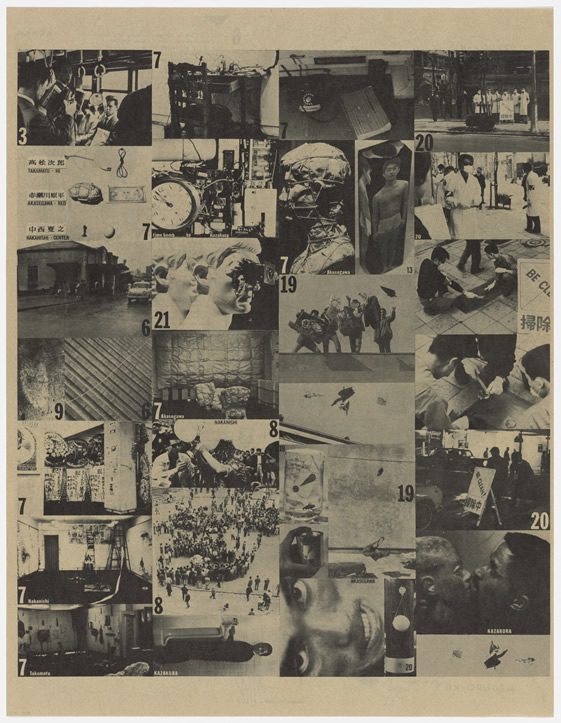
Hi Red Center. Hi Red Center poster (verso).
Fluxus Edition, edited by Shigeko Kubota, designed and produced by George Maciunas, New York.
Edition announced 1965.
Offset printing on paper, double-sided. 22 1/16 x 17″ (56 x 43.2 cm).
The Museum of Modern Art, New York.
The Gilbert and Lila Silverman Fluxus Collection Gift.
© The Estate of Takamatsu Jirō
courtesy Yumiko Chiba Associates, Tokyo
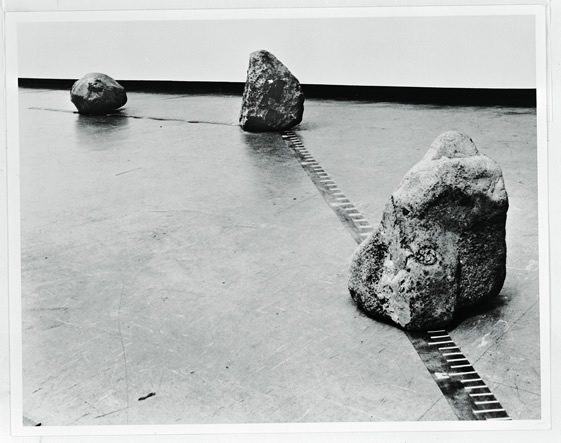
Lee Ufan. Relatum (Kaidai kankeikō) (formerly Phenomena and Perception A [Genshō to chikaku A]). 1969.
Three stones and chalk on rubber measuring tape.
Dimensions vary with installation.
Collection of the artist, Kamakura.
© and courtesy Lee Ufan
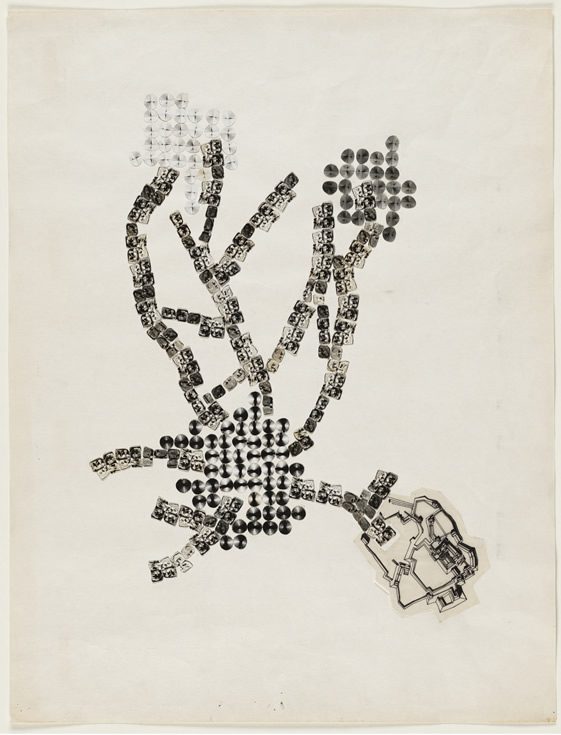
Kurokawa Kishō. Helix City Plan for Tokyo (Helix keikaku). 1961.
Ink, tracing paper, and gelatin silver prints collaged on paper. 21 1/2 x 17 1/2″ (54.6 x 44.5 cm).
The Museum of Modern Art, New York.
Gift of the architect.
© 2012 Kurokawa Kishō
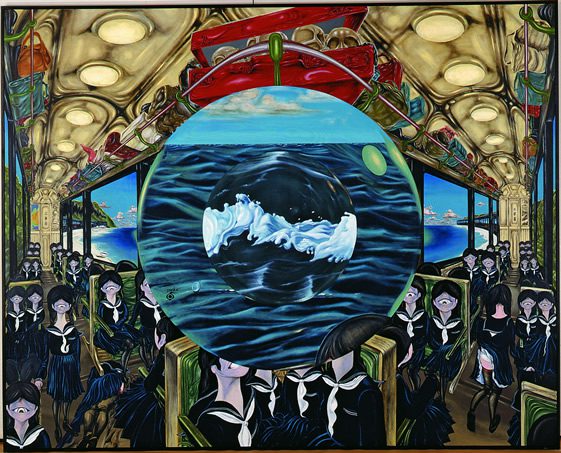
Nakamura Hiroshi. Circular Train A (Telescope Train) (Enkan ressha A [Bōenkyō ressha]). 1968.
Oil on canvas. 71 5/8 x 89 9/16″ (182 x 227.5 cm).
Museum of Contemporary Art Tokyo.
© Nakamura Hiroshi,
courtesy Museum of Contemporary Art Tokyo
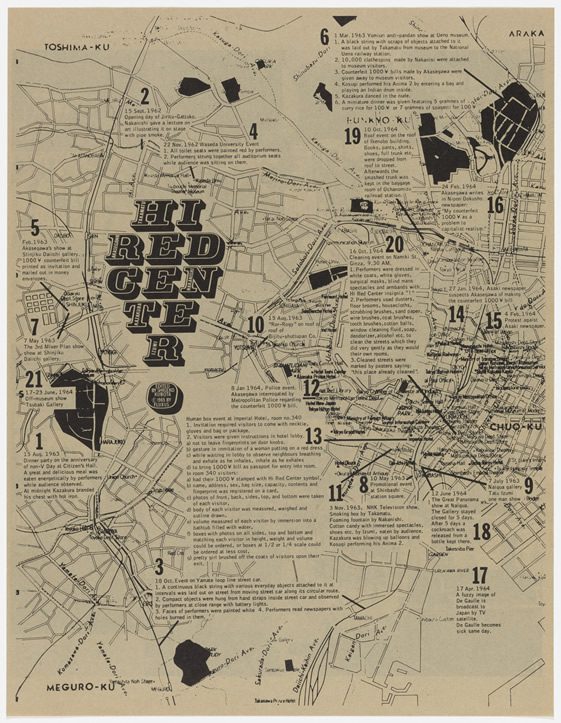
Hi Red Center. Hi Red Center poster (verso).
Fluxus Edition, edited by Shigeko Kubota, designed and produced by George Maciunas, New York.
Edition announced 1965.
Offset printing on paper, double-sided. 22 1/16 x 17″ (56 x 43.2 cm).
The Museum of Modern Art, New York.
The Gilbert and Lila Silverman Fluxus Collection Gift.
© The Estate of Takamatsu Jirō
courtesy Yumiko Chiba Associates, Tokyo
